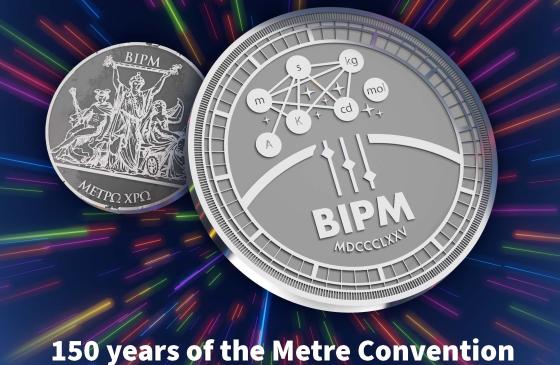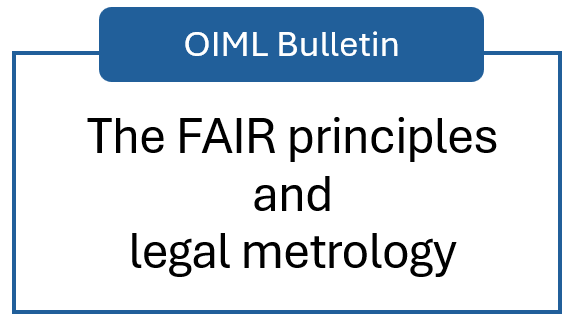OIML BULLETIN - VOLUME LXVI - NUMBER 2 - April 2025
e v o l u t i o n
The rise of DC energy and the need for legal metrology in DC metering
Henri Schouten
Citation: H. Schouten 2025 OIML Bulletin LXVI(2) 20250205
Abstract
The increasing adoption of direct current (DC) energy across various applications – such as energy storage systems, DC microgrids, and electric vehicle (EV) charging infrastructure – demonstrates a clear shift toward DC-based solutions. Unlike alternating current (AC) systems, DC microgrids offer significant advantages, including reduced power conversion losses, lower costs, and more compact system designs. As a result, accurately measuring DC energy has become essential, particularly for billing applications.
Several product standards for DC meters have emerged in recent years to support this transition. Additionally, the International Organization of Legal Metrology (OIML) is actively developing a dedicated Recommendation for these instruments. In Europe, while the Measuring Instruments Directive (MID) was initially intended for AC meters, it is already being applied to certify DC meters. Moreover, the European Commission has proposed amendments to the MID that explicitly incorporate DC meters. Despite these advancements, the broader integration of DC technologies into existing infrastructure remains challenging.
Introduction
Electricity is essential to modern society, powering homes, industries, and transportation. Historically, AC has been the dominant method for generating, transmitting, and distributing electrical energy. However, recent technological advancements are challenging this paradigm, as DC emerges as a compelling alternative for many applications.
This article examines the increasing relevance of DC energy, particularly in the context of metering and legal metrology. It explores the evolving regulatory landscape in Europe, recent advancements in DC meter product standards, and ongoing efforts within OIML to establish a dedicated Recommendation. Additionally, practical experiences with DC meter certification and future industry developments are discussed.
The Growing Importance of DC Energy
Modern electrical systems increasingly rely on DC, driven by the widespread adoption of energy storage systems and the shift toward renewable energy. Unlike AC, which requires frequent conversions to interface with DC-based technologies, a fully integrated DC system eliminates unnecessary energy losses associated with these conversions.
Photovoltaic (PV) systems and batteries inherently operate on DC. In a traditional AC-based system, energy from a PV array or battery must be converted multiple times – first from DC to AC for grid compatibility, then back to DC for storage or consumption. By adopting DC-based power distribution, we can eliminate these intermediate conversions and improve overall efficiency.
DC power also offers inherent stability advantages. Unlike AC systems, which can experience disruptions from harmonic distortions, DC provides a constant, oscillation-free energy flow. This makes DC microgrids more resilient and reliable. Additionally, DC enables faster and more efficient charging of energy storage systems, particularly in high-power applications such as EV charging infrastructure.
The development of DC microgrids further supports this transition. These systems integrate DC loads, energy storage, and renewable generation sources, minimizing reliance on AC grid connections. Compared to AC microgrids, their DC counterparts require fewer energy conversions, reducing power losses and improving system efficiency. Moreover, DC microgrids eliminate issues related to reactive power, further optimizing performance.
Legal Metrology for DC Meters in Europe
As the adoption of DC energy increases, the need for accurate and legally recognized DC metering becomes critical – particularly for billing applications. Historically, legal metrology frameworks have focused on AC metering. In Europe, the MID (2014/32/EU), which has been in force since 2006, specifies in its Annex V requirements for active electrical energy meters. While traditionally these requirements have been interpreted as applying only to AC meters, this perspective is evolving.
Several factors support the inclusion of DC meters within the existing MID framework:
- The term "active electrical energy" encompasses both AC and DC energy, suggesting no fundamental limitation to AC-only applications.
- DC meters can meet the same instrument-specific requirements outlined in the directive.
- The European Commission's Mandate M/541 specifically requested the development of standards for DC meters, signalling regulatory intent to include them under the MID.
In November 2024, the European Commission further clarified this position by proposing an amendment to the MID explicitly incorporating DC meters into Annex V. This amendment is expected to take effect within the next few years and provide a clear legal pathway for DC meter certification.
Advancements in DC Meter Product Standards
The certification of DC electricity meters requires well-defined product standards. Such standards were lacking until recently, but significant progress has been made since 2020:
- Germany (2020): VDE-AR-E 2418-3-100 introduced a national standard for metering within EV charging infrastructure, including Annex A for DC meters.
- United States (2021): ANSI C12.32 established commercial, revenue-grade DC meter requirements aligned with OIML R 46.
- International Electrotechnical Commission (2021): IEC 62053-41 defined measurement requirements for DC electrical energy in conjunction with IEC 62052-11:2020.
- Europe (2023): EN 50470-4 adapted IEC 62053-41 for European applications, with the goal of becoming a harmonized MID standard.
These developments mark a significant breakthrough, providing a solid foundation for DC meter assessment and certification.
Ongoing OIML Developments
Recognizing the need for a dedicated international Recommendation for DC meters, OIML Technical Committee 12 (TC12) has undertaken efforts to establish one. Initially, the plan was to modify OIML R 46:2012 "Active Electrical Energy Meters" to accommodate DC meters. However, incorporating DC metering requirements within the existing framework proved complex. Instead, a separate Recommendation is now being developed within Project Group P4, led by Katya Delak (United States).
The Working Draft includes:
- Part 1: Metrological and Technical Requirements – accuracy classes, environmental influences, and disturbance factors.
- Part 2: Metrological Controls and Performance Tests – verification procedures and compliance testing.
This effort aligns with OIML G 22:2022 "Electric Vehicle Supply Equipment (EVSE)", which is also being transitioned into a full Recommendation. These two Recommendations will work in harmony to ensure consistency across DC metering and EV charging infrastructure.
Experiences with DC Meter Certification
In Europe, MID approvals for DC meters are already being issued. However, DC metering presents unique challenges compared to traditional AC metering:
- Design considerations: High-current DC meters (e.g., 600 A for standard EVSE, up to 1,500 A for megawatt charging) require robust designs. Some manufacturers separate the sensor unit from the display unit, enabling flexible installation within EV charging stations.
- Measurement techniques: While some meters use digital sensors, others rely on external shunts with analogue signal processing.
- Testing limitations: Until recently, test bench manufacturers lacked suitable setups for DC metering. While progress has been made, challenges remain for high-current and high-voltage applications.
- Thermal effects: Proper connection design is critical to minimizing resistance-related heating, which can impact measurement accuracy.
As testing capabilities continue to advance, these challenges will be addressed, improving the reliability and accessibility of DC meter certification.
Future Outlook
The transition toward DC energy is accelerating, supported by emerging product standards and regulatory frameworks. However, broader integration into existing infrastructure remains a hurdle.
To address this, NMi, in collaboration with the Current/OS Foundation, is actively working on safety standards and regulations to ensure the secure and efficient deployment of DC technologies. Engaging regulatory authorities and industry stakeholders is essential to fostering widespread adoption and maximizing the benefits of DC energy.
By overcoming these challenges, the energy sector can fully harness the potential of DC technologies – enhancing efficiency, reducing costs, and contributing to a more sustainable energy future.






